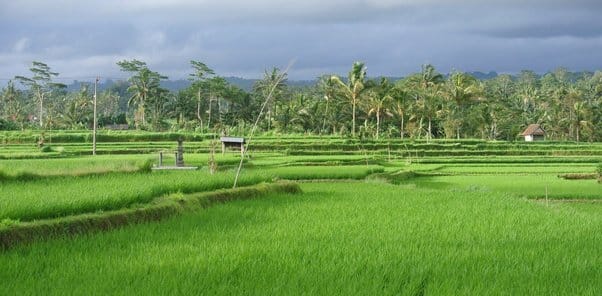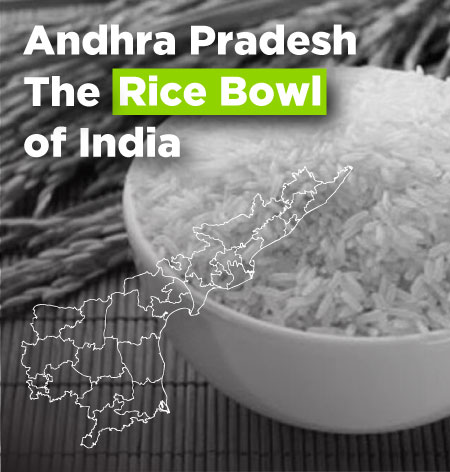India, a land of diverse cultures and traditions, is known for its agricultural richness. From the fertile plains of the Ganges to the lush green fields of the south, the country boasts a variety of crops that contribute to its agricultural prosperity. Among the many states in India, there is one that stands out as the epitome of rice cultivation. Known as the “Rice Bowl of India,” this state has earned its title by consistently producing an abundance of rice. In this article, we will explore which state is called the “Rice Bowl of India” and delve into the reasons behind its recognition.
The Rice Bowl of India – A Beautiful State
Rice, a staple food for millions of people across the country, holds a significant place in Indian cuisine. When it comes to rice production, one state emerges as the leader, supplying a substantial portion of India’s rice harvest. That state is none other than Andhra Pradesh. Located in the southeastern part of the country, Andhra Pradesh has gained recognition as the “Rice Bowl of India” due to its extensive cultivation and high-quality rice yield.

Factors Contributing to Andhra Pradesh’s Success
Favorable Climate and Geography
Andhra Pradesh’s geographical location and climate play a vital role in making it the perfect region for rice cultivation. The state is blessed with a coastal strip that provides the ideal combination of alluvial soil, ample water resources, and a long monsoon season. These factors create a conducive environment for rice crops, ensuring high productivity and a rich harvest.
Irrigation Facilities
To sustain large-scale rice cultivation, an efficient irrigation system is crucial. Andhra Pradesh has invested heavily in developing robust irrigation infrastructure, including major dams, reservoirs, canals, and check dams. These measures help regulate water supply and ensure that rice fields receive adequate irrigation throughout the cultivation period, further enhancing the state’s rice production.
Extensive Research and Development
The agricultural sector in Andhra Pradesh benefits from extensive research and development initiatives. The state government, in collaboration with agricultural universities and research institutions, focuses on developing and implementing advanced farming techniques, improved seed varieties, and efficient pest management practices. These efforts contribute to higher yields, better quality rice, and overall agricultural growth in the state.
Farmer’s Knowledge and Expertise
The farmers of Andhra Pradesh possess generations of traditional knowledge and expertise in rice cultivation. Passed down from one generation to another, this invaluable wisdom forms the backbone of their farming practices. With a deep understanding of the local conditions, the farmers employ time-tested techniques and know-how to maximize their rice production, ensuring that Andhra Pradesh remains the “Rice Bowl of India.”
States in India known for rice cultivation, other than Andhra Pradesh?
While Andhra Pradesh takes the crown as the “Rice Bowl of India,” it is worth mentioning that several other states in the country also contribute significantly to rice production. These states, though not holding the same level of recognition as Andhra Pradesh, play a vital role in meeting the nation’s rice demands. Let’s explore a few of these states:
West Bengal: Located in the eastern part of India, West Bengal has a rich tradition of rice cultivation. The fertile Gangetic plains, coupled with an extensive network of rivers and canals, provide favorable conditions for growing rice. The state is known for its aromatic varieties of rice, such as Basmati and Gobindobhog.
Punjab: Punjab, situated in the northwest region of India, is renowned for its contribution to the country’s food grain production. While wheat is the primary crop in Punjab, the state also excels in rice cultivation. The well-developed irrigation infrastructure and the use of modern agricultural practices contribute to Punjab’s significant rice production.
Tamil Nadu: Tamil Nadu, located in the southern part of India, boasts a rich agricultural heritage. The state’s diverse agro-climatic conditions allow for the cultivation of a wide variety of crops, including rice. The Cauvery delta region in Tamil Nadu is particularly known for its paddy fields, producing high-quality rice.
Uttar Pradesh: Uttar Pradesh, the most populous state in India, is not only known for its historical and cultural significance but also for its agricultural productivity. The fertile Gangetic plains in Uttar Pradesh support rice cultivation on a large scale. The state government has undertaken various initiatives to promote modern farming techniques and enhance rice production.
Bihar: Bihar, located in the eastern part of India, has a predominantly agrarian economy. The fertile soil and abundant water resources in the region favor rice cultivation. The state government has been implementing various schemes to support farmers and improve rice productivity in Bihar.
Odisha: Odisha, situated on the eastern coast of India, has a significant agricultural sector. Rice is one of the primary crops cultivated in the state, with both rain-fed and irrigated farming practices being prevalent. The coastal plains and river valleys provide suitable conditions for rice cultivation in Odisha.
While these states contribute to rice production in India, it is Andhra Pradesh that stands out as the unrivaled leader, earning the well-deserved title of the “Rice Bowl of India.”
India, with its diverse geographical and climatic conditions, is blessed with abundant agricultural resources. Andhra Pradesh, known as the “Rice Bowl of India,” has emerged as the primary producer of rice in the country. The state’s favorable climate, extensive irrigation facilities, research and development initiatives, and the knowledge and expertise of its farmers have contributed to its remarkable success in rice cultivation. However, it is important to recognize the significant contributions of other states, such as West Bengal, Punjab, Tamil Nadu, Uttar Pradesh, Bihar, and Odisha, in meeting the nation’s rice demands. Together, these states ensure that India remains self-sufficient in rice production and continues to be one of the world’s largest producers of this vital staple crop.
So, the next time you savor a plate of aromatic, fluffy rice, take a moment to appreciate the hard work and dedication of the farmers and the agricultural prowess of the states that make India the true “Rice Bowl” of the world.
Read Our Blogs – Click here for More Blogs
Want to know more About Yummiest Recipe ?
Buy Roop Mahal Basmati Rice – Flipkart | Big Basket | Amazon
FAQs
The state called the “Rice Bowl of India” is Andhra Pradesh.
Andhra Pradesh is known as the “Rice Bowl of India” due to its favorable climate, extensive irrigation facilities, research and development initiatives, and the knowledge and expertise of its farmers.
Andhra Pradesh’s coastal strip provides alluvial soil, abundant water resources, and a long monsoon season, creating an ideal climate for rice cultivation.
The state government, along with agricultural universities and research institutions, focuses on research and development initiatives to improve farming techniques, develop better seed varieties, and implement efficient pest management practices.



